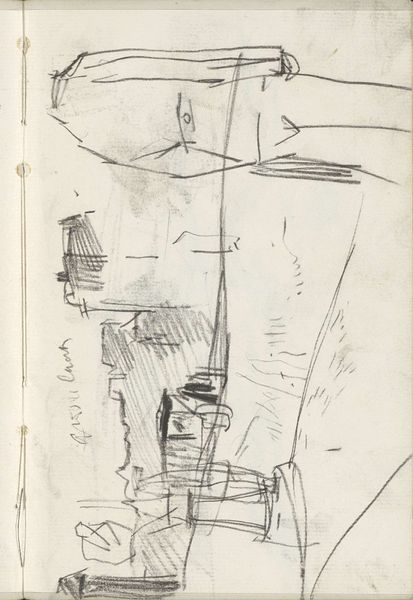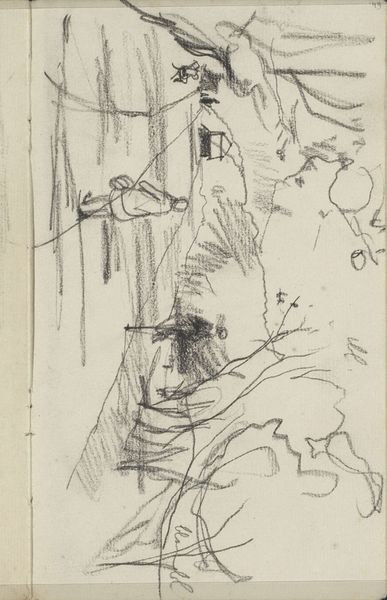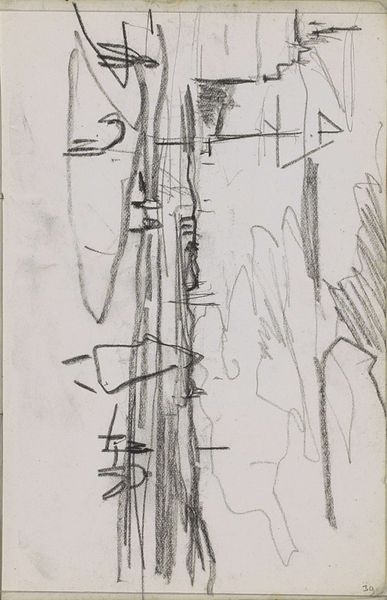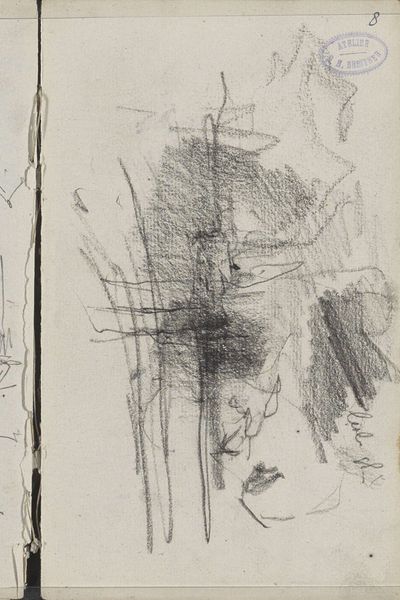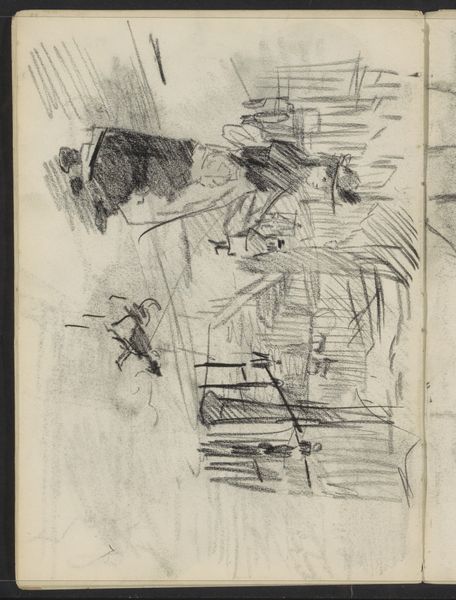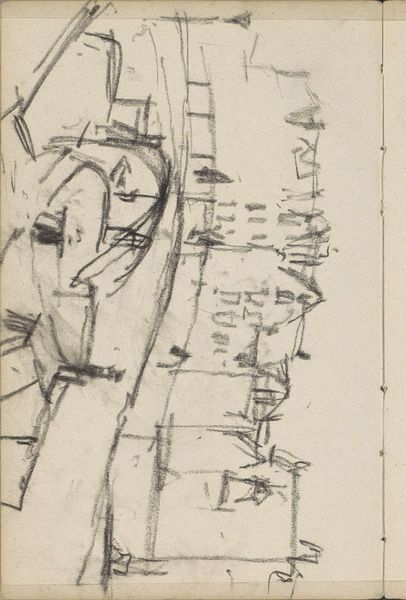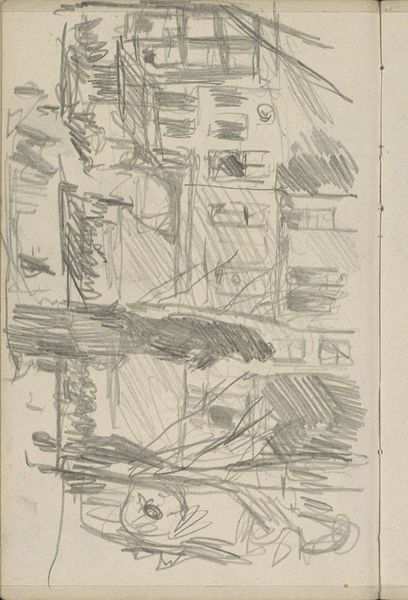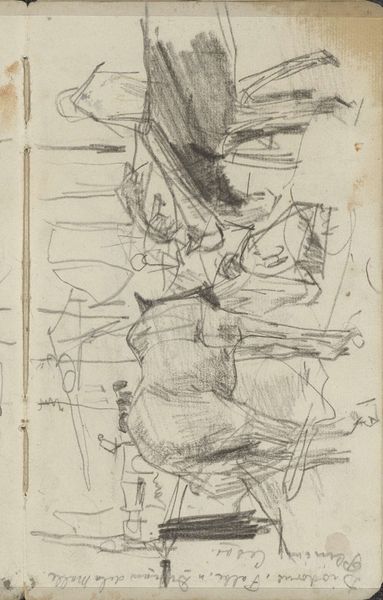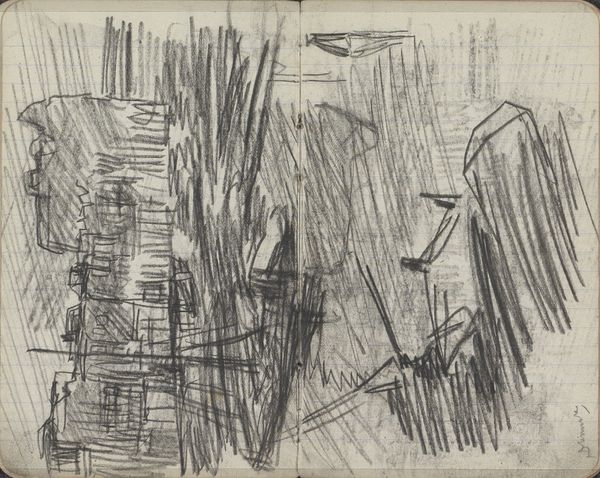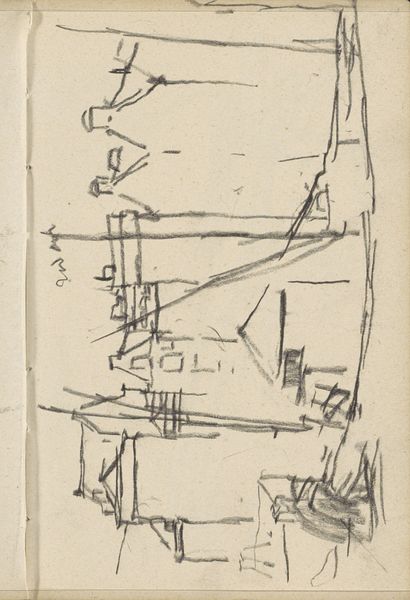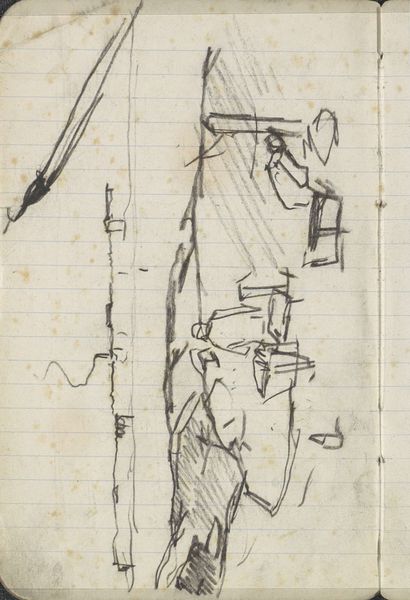
Copyright: Rijks Museum: Open Domain
Curator: Here we have Isaac Israels's "Vrouwen op straat, mogelijk in Amsterdam" - "Women on the Street, possibly in Amsterdam," dating from somewhere between 1886 and 1934. It’s a pencil drawing. What strikes you initially? Editor: There's something incredibly raw and immediate about this sketch. The hurried lines create a sense of bustling street life, almost a feeling of being jostled in a crowd. It feels like catching a fleeting glimpse rather than a studied observation. Curator: Yes, exactly! It has that wonderfully unpolished quality, like catching a thought on paper. I find it so compelling—Israels isn't trying to create a perfect representation. He captures the energy and movement, the essence of those women on the Amsterdam street. Editor: I wonder about those women, though. Who were they? What were their lives like? We're given very little information beyond their mere presence in a public space, but even that simple act of existing, of occupying space, becomes a political statement, particularly for women in that era. Curator: Absolutely. And the ambiguity of the date makes it interesting. Was this during a period of burgeoning women's rights movements? What specific societal pressures were these women facing? It all seeps into the interpretation, doesn't it? The clothing details could help place it...those hats, for example... Editor: Exactly! And consider how the sketch medium itself relates to access and class. Who has the time and resources to pose? This more informal impression aligns well with those Impressionist tendencies. But do these rapid lines imply commentary? Does it celebrate modern life? Or does the anonymity erase each woman? Curator: It is ambiguous. I think it hints at both. On one level, he celebrates modern urban life, its vibrancy and transience. At the same time, those fleeting glimpses remind us of how easily individuals can become anonymous in the masses. It's both exciting and a little melancholic. It’s as if he gives us their ghosts. Editor: Beautifully put. It does provoke this question about modern life—the dialectic between anonymity and belonging. What responsibility does an artist have in representing these figures? The political always sits next to the personal. Curator: Perhaps it comes down to perspective. What we project on this moment in time may, in fact, reveal something about our own. What do you think, then, if we conclude that this drawing of Amsterdam street life is a potent visual marker for our understanding of how both change and continuities in history play out and resonate for contemporary audiences today? Editor: It makes visible a way for us to grapple with how much women continue to have their bodies, labor, and time policed. Let's move on to the next piece...
Comments
No comments
Be the first to comment and join the conversation on the ultimate creative platform.
